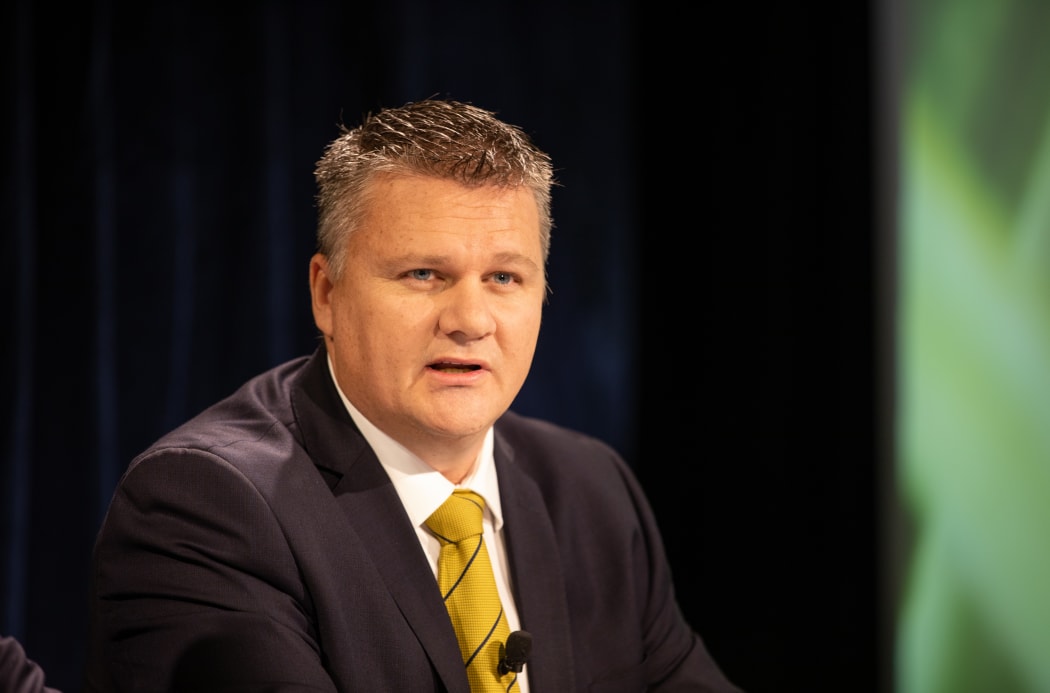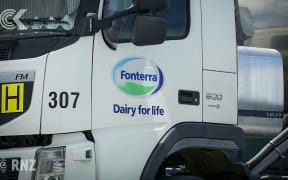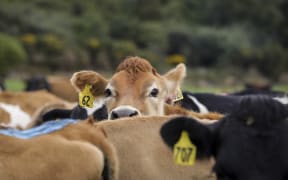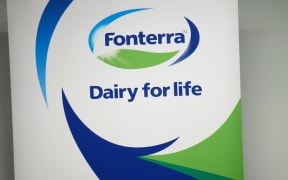Fonterra chief executive Miles Hurrell has told a packed annual meeting that New Zealand's largest company needs to reduce its debt.

Fonterra's chief executive Miles Hurrell. Photo: RNZ / Dan Cook
The co-operative announced it planned to reduce its debt levels by $800 million to protect its balance sheet.
Mr Hurrell today told about 360 farmers and shareholders in Lichfield, Waikato: "Our debt level is higher than we want it to be.
"We want to reduce debt and improve earnings so our debt to earnings ratio returns to our target range."
In direct language, Mr Hurrell said: "We are reviewing all discretionary incentives in the pipeline and challenging all spending to help us achieve this."
Fonterra has set its capital expenditure at $650 million - a reduction of $221 million.
It is working to reduce its operational expenses to the levels of the 2017 financial year.
Mr Hurrell said that its operational expenditure had increased by 7 percent - or $161 million - in the last financial year.
The increase was planned but it had expected its earnings to be higher - "and this didn't happen".
"Balancing our expenditure and earnings is a key focus for us going forward."
Asset exit "not a fire-sale"
Chairman John Monaghan identified three assets that it may exit as part of its review of its operations, as these were no longer considered core to its strategy.
One of its investments was in Chinese dairy company Beingmate.
But he did not identify the other two publicly.
"At this stage nothing is off the table and if we choose to divest the ownership of an asset it could be in full or in part," he told the meeting.
"I have previously mentioned Beingmate. The other two are also part of our value-added portfolio.
"The Board's intention is to make a decision on each of these investments and complete the transaction within this financial year."
The review of assets and operations came after a difficult year for New Zealand's largest company.
It had to revise down its forecast payout for farmers from $6.75 a kilo of milk solids to between $6.25 and $6.50, due to increasingly strong competition worldwide.
Worse, it delivered a $196 million loss for the year ended July compared with last year's profit of $734m, largely due to writedowns of $439m in its investment in Chinese dairy company, Beingmate and a $232m payout to French food company Danone after the botulism contamination scare.
At the same time, management has been overhauled at the dairying giant.
Chief executive Theo Spierings departed and a new management team of chief executive Miles Hurrell and chairman John Monaghan put in place.
They immediately ordered a review of its operations.
Mr Monaghan said the second phase of the Fonterra review was to take stock of all assets, investments and partnerships.
"It is not a fire-sale. We are taking a clinical look across our business. There are no sacred cows and there's no room for being sentimental."
Once the review was done, the company would need to act on its findings.
"This may mean exiting certain investments that are no longer core to our strategy, reallocating capital to new or existing ventures, or simply reducing debt. We have some tough decisions to make."
Positives often overlooked - Fonterra chairman
While Fonterra chairman John Monaghan labelled the performance of the dairy giant "disappointing" today, he was also at pains to point out what had gone well, saying that was often missed.
Mr Monaghan said there were a number of positives including a headlline $6.69 per kilogram of milk solids farmgate milk price, which he said was third highest in a decade.
At the same time, Fonterra's off-Global Dairy Trade sales added around 10 cents per kilogram of milk solids last year - around $150 million.
Mr Monaghan said that the sales and keeping milk price costs below inflation was equal to around $750 million more each year compared to 2009 when the milk price manual was introduced.
"There has been a structural change in our milk prices since Fonterra was formed. We've gone from being paid about half as much as our global peers to the point now where we are consistently paid the same or thereabouts.
"It sounds arrogant to say it, but the fact is that simply never would have happened without a strong Fonterra.
"For a time this year, New Zealand farmers were paid this highest milk prices in the world."
His comments came during an annual meeting in which the management team of Fonterra were often questioned about the future of the company and the issues which surfaced this year.




